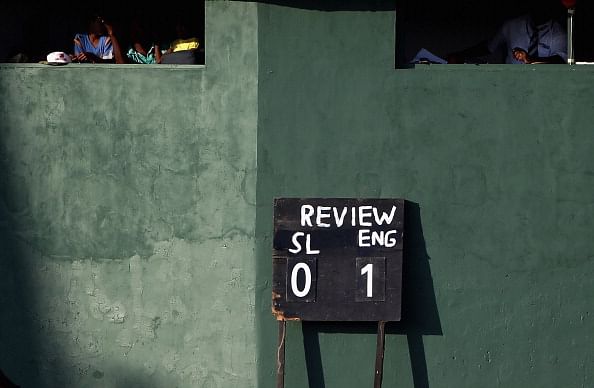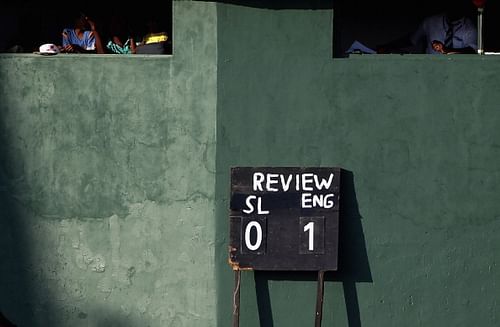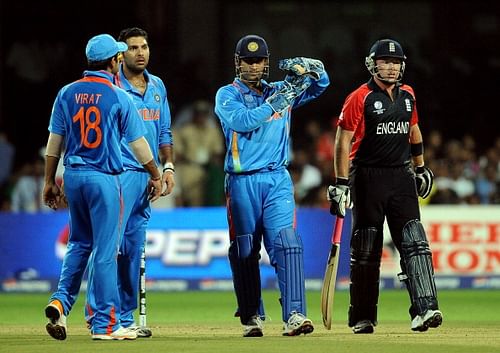
The good, bad and the ugly of Umpire Decision Review System

After 4 umpiring howlers occurred in the first Test between England and India, held in Trent Bridge, which could have possibly changed the complexion of the game, questions have once again started to arise whether the BCCI's decision to not use the DRS was a wise one or not. After Murali Vijay fell for 146 and Matt Prior was wrongly given out, the much hyped DRS is in the news once again.
When did it all begin?
A controversy stricken India's tour to Australia in 2007-08 saw almost 11 decisions go against the tourists in the 2nd Test in Sydney, leading to a backlash from the BCCI accusing the Aussies of playing against the spirit of the game and the umpires of being biased towards the hosts. It led to the eventual retirement of the officiating umpire Steve Bucknor and it forced the ICC to introduce the DRS.
The DRS or Decision Review System was launched in 2008 by ICC with the aim of reviewing decisions which seem inconclusive to the on-field umpires in case of whether a batsman has been wrongly adjudged out or not. The system was first tested in an India vs Sri Lanka game in 2008 and officially launched on 24 November 2009 during the first Test match between New Zealand and Pakistan in Dunedin.
The system was initially made compulsory in all international matches, But later ICC changed its stance and made it optional, stating that the the system would be in use only if both teams agreed.
How does the DRS work?
3 parts constitute the DRS:
1. The Hawk Eye is the ball tracking technology that tracks the journey of a ball after delivery and can determine if it will hit the wicket or not.
2. Hot Spot – This system uses infra red imaging and illuminates where the ball has been in contact with the bat or pad. The hot spot’s success rate is found to be 90-95% and has helped the umpires to find out if the ball nicked the bat or gloves on the way to the fielder.
3. The Snickometer relies on microphones to detect small sounds made as the ball hits the bat or pad. The Snickometer was suspended in 2010, but reintroduced last year.
If a decision has been given in regards to whether a batsman has been dismissed or not, and the players oppose that decision, the fielding team or the batsman in question may choose to challenge the umpire’s call and refer it to the third umpire. He does so by signalling a “T” with his hands. After a number of replays have been seen by the TV umpire, he conveys his views to the on-field umpires, reporting whether he is in favour of the call or contradicts it. If an umpire is unsure after taking into account the various replays, the original decision as given by the on-field umpire stands. The final decision rests with the on-field umpire who signals it to the players.
Each team can make 2 unsuccessful reviews every 80 overs of a Test innings and have the luxury of 1 unsuccessful review in an ODI innings. However what is to be noted is that errors while viewing the replay is common. A wrong delivery may be played or the organisers might not have reset the system, as happened with Jonathan Trott in the Ashes at Trent Bridge, which can ultimately impact the outcome of the game.
The Criticism and the dubious decisions
Often a howler can change the complexion of the game, like in the Sydney Test, where India could have saved the match, if not for the errors. The DRS was introduced to bring about a change in the way cricket is played by eradicating these umpiring errors, making the game a fair contest for both the sides.
The players and coaches have generally given a positive feedback to this system since its launch, with the ICC sure that technology is the way ahead. However there have been some criticisms as well, with the BCCI being its biggest critic as it believes the system is not 100% accurate. Also, the cost of using the system in every match takes a toll on the host nations with almost USD 60,000 spent per match. This has led to various vociferous protests from member boards who have criticized the ICC for coming up with such technology as the money is not going from its "coffers", but rather from their own purse.
The Indian board so far has questioned the unreliability of the ball tracking system or the hawk eye. Initially when a not out LBW was reviewed, and if the ball was 2.5m away from the wicket, the batsman was adjudged not out as it was argued that since the ball has 40 cms more to travel before hitting the wickets, it can’t be deciphered accurately if it actually would have hit the wickets or not because of the batsman’s long stride out.
During the 2011 WC match in Bangalore, England's Ian Bell was adjudged not out by umpire Billy Bowden after India's Yuvraj Singh appeal for lbw. Yuvraj and Dhoni referred it to the third umpire where replays suggested that Bell had been struck in line and the ball was going on to hit the stumps. However as he was 2.5 metres down the pitch and was declared not out. The match ended in a tie, with Dhoni voicing his displeasure at the decision.

The ICC, tweaked the rules in the middle of the World Cup after it earned BCCI’s wrath and issued fresh guidelines to match officials that even though the distance between the stumps and the point of impact be 2.5 metre or greater, on-field umpires can reverse not out LBW decisions.This did not go down too well with Sri Lankan Kumar Sangakkara who had accused the ICC of bowing to the demands of the BCCI, despite the rules being laid down well before the tournmaent started.
Niranjan Shah, a BCCI heavy weight, explained why BCCI is against the system and argued that the limited number of reviews should be done away with. "If a team exhausts its options in the first over, the team has to live without the system for the whole match. If the system isn't available, what is the use?"
An incident occurred in the first Ashes Test in Trent Bridge last year when Stuart Broad’s edge carried to the slip via Brad Haddins but the umpire gave it not out. As Australia had no reviews remaining, Broad stuck to his crease, and scored a crucial knock to hand England a 14-run victory.
There have been cases where despite the batsman not nicking the ball with his bat, the TV umpire has adjudged him out if the Snickometer reveals a sound, which can be of the ball brushing against his pad or glove as it zooms to the keeper. The system had came under scrutiny on the second day of the third Ashes Test Down Under when in Perth, Joe Root was given out caught behind when all the technology suggested the ball did not touch his bat. Umpire Marais Erasmus put up the finger but Root reviewed the decision as he felt he had not nicked it. The much-criticised HotSpot showed no sign of an edge while the snickometer proved that the noise occurred after the ball had passed the bat, but still he was still sent back to the pavilion.
Warren Brennan, the inventor of the hotspot has a cure for the unreliability of the technology by advising cricketers to stop using all tapes around the bat. To this, Ravi Shastri argues that "is it the job of cricket to make the technology work better or the other way round?"
The DRS has has a life changing impact on the umpires too, with their attitude in the game being questioned. Often they reason that if they make a wrong decision, the reviews will over turn it, not realizing as Dickie Bird states that "No matter what the technology, umpires will be the best judges of a decision."
With a large scrutiny now reserved for them, the DRS has taken a huge toll on the umpires. Tony Hill was on the verge of retirement when 5 of his decisions were overturned by the DRS in the Ashes Series in 2013. In order to reduce their stress, the ICC has banned the replays to be screened at the ground.
With only 28% reviews successful at the World Cup in 2011, it is high time the ICC reward these umpires with their rights once again until they come up with a foolproof system. The intent of the ICC to make cricket devoid of any errors is on the right path. They can take a leaf out of FIFA’s book who introduced the Goalline Technology in the World Cup after trying it out for months at the grassroot level.
Till that happens, we can prepare ourselves to watch cricket with all its human mistakes, which is what makes the game such a great leveller.